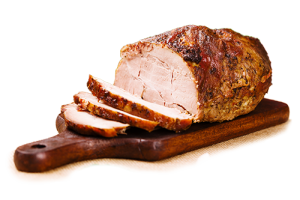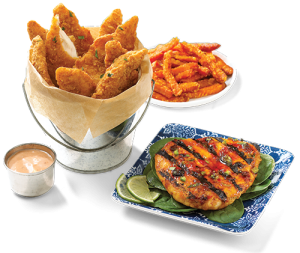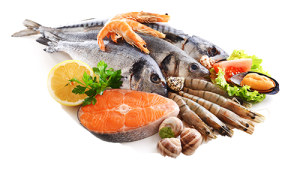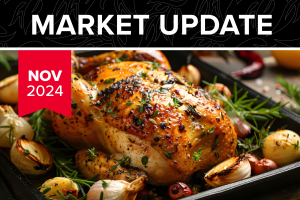Your monthly update on the state of the pork, poultry, beef, and seafood industry, direct from the category experts at Y. Hata.
Please contact your account manager for questions.
Pork
 With consistently strong retail and export demand that is paired with – a reduction in slaughter, ongoing labor issues, weather related challenges, and limited cold storage stocks – a full steady to firm tone is felt across most items.
With consistently strong retail and export demand that is paired with – a reduction in slaughter, ongoing labor issues, weather related challenges, and limited cold storage stocks – a full steady to firm tone is felt across most items.
- Bellies have a firmer tone as retail and fast-food demand remains strong and labor challenges continue to impact supply. Imported bellies are being watched closely as international shipping disruptions and delays are creating havoc for importers as they can only wait for their containers to arrive in the US. Delays up to 2 months are common.
- Ribs continue to move well and are seeing modest strength but finding them can be a challenge.
- Butts are showing strength and expect to see an increased of $.10 lb for boneless and $.15 lb for Bone-in over the next couple of weeks. Labor continues to be a challenge and that can be seen in the spread of $.30 lb+ between Bone-in and Boneless.
- Loins are also trending up, $.05 -$.10 lb, specifically for Bone In products and we will see that impact in portion pork chops soon. Boneless loins are steady, but export demand is helping to keep inventory clean.
Outlook
- Labor continues to impact the industry and presents a challenge for most boneless product that require boning, slicing (bacon), cubing, cooking, curing (pepperoni, Canadian bacon), smoking, etc.
- Farmers are adjusting down Hog input to better align with output and demand.
- The US continues to export large amounts of pork to China, Japan, Philippines, Central America and the Caribbean.
- Feed cost are at elevated levels and have a significant impact on Hog prices.
- Cold storage levels are at low levels compared to YOY.
- Transportation cost and truck availability continue to affect the industry.
Combine all the above with the anticipated increase from the Foodservice sector and we can expect to head into spring and summer with availability issues and higher prices
Poultry
 The poultry market certainly reflects some of the same challenges facing our pork friends. Reduced output, higher feed cost, transportation cost, poor weather, etc., they all have combined to elevate prices not seen in many years.
The poultry market certainly reflects some of the same challenges facing our pork friends. Reduced output, higher feed cost, transportation cost, poor weather, etc., they all have combined to elevate prices not seen in many years.
- BL SL Thighs have already increased $.35 lb since the beginning of the year and expect to see it move upward another $.15lb soon. Labor to debone them is still an issue.
- Leg meat & Leg Qtr’s demand remains strong due to export sales and to US deboning processors. Once the leg qtr’s are deboned the processors have no issue selling at higher prices.
- Thighs Bone-in & Boneless finally following the trend as the other “Back Half” parts. Prices are moving up $.10 lb and possibly another $.10 lb in April.
- Jumbo Random Breast is at levels I have not seen since 2017… they have increased $.25 lb since Jan and will go up another $.30 lb this weekend. You can partially thank the Chicken Sandwich wars going on with Chick Fil A, Popeye’s, Wendy’s, McDonalds, etc., for this.
- Wings of all sizes are challenging to uncover as most are contracted or going to retail. Offerings are very limited, and prices are at levels I have not seen…ever. I recently had an offer on Jumbo Party Wings of $3.50 lb and told the seller let me get back to you. I called back ½ hour later and it was sold. Lesson learned, if you need it, buy it, do not hang up the phone.
Outlook
- The adjusted output by Farmers is having a dramatic impact on prices and availability.
- Feed prices are at much higher levels than a year ago.
- Labor continues to be a challenge, especially for boneless product and those that require special packaging.
- Recent poor weather will have a short-term impact on supplies.
- Freight cost and truck availability remains an issue across the nation.
- With the anticipation of Food Service demand picking up, the Retailers do not want to give up the market share. they gained the past year and will compete for product with Food service.
- When will these high prices end and will the market come crashing down or will they at least level off? The sentiment is “at best, steady prices over the next 30 days…except for wings”.
Beef
 Echoing the challenges facing the pork and poultry segments, the beef industry is also coping with a myriad of issues which include ongoing labor issues, driver shortages, higher feed costs, etc. to name just a few.
Echoing the challenges facing the pork and poultry segments, the beef industry is also coping with a myriad of issues which include ongoing labor issues, driver shortages, higher feed costs, etc. to name just a few.
- Ribs: Although rib prices have softened up recently from the highs that we saw in February, retail demand continues to remain strong. Coupled with increased foodservice demand as COVID restrictions are loosened nationwide, this has led to tighter availability and higher prices as we approach the summer months.
- Striploins, which are traditionally, a good value in relation to the ribeye’s are at unheard of high prices. For Choice Striploins in particular, we are seeing prices that are over $2/lb. higher this year in comparison to this same time last year.
- Top Sirloin Butts have proven to be a good value and remained relatively steady in price. However, these low prices have begun attracting retailers so we can expect tighter availability and higher prices moving forward.
- Chuck Roll prices have risen to extraordinary levels due to increased demand both domestically and overseas. Prime grade is over $1.50/lb. higher and Choice grade is over $1/lb. than this same time last year.
- Chuck Flat pricing has also seen steep increases due to the overall strength of the current chuck roll market with international contenders (primarily South Korea) stepping in. Prices have increased $.67 since January and will be increasing by another $.70 in April.
- Oxtails prices continue to remain elevated with sustained demand and limited supplies. Prices have increased by $.07 with no indication of any softening in the market.
- Australian Wagyu continues to be in short supply as they are dealing with drought conditions and still rebuilding their herd after the wildfires 2 years ago. Additionally, delays with offloading containers at the port of Long Beach has also been detrimental to availability.
Outlook
-
Moving forward with foodservice opening back up more fully and more people getting vaccinated we should expect supply chain issues and higher prices.
Seafood
 Overall, not many changes in the Seafood Market since last month.
Overall, not many changes in the Seafood Market since last month.- King Crab, Snow Crab, Deep Water Clusters, Blue Swimming Crabmeat, and Soft-Shell Crab are all still short, resulting in limited offerings and extremely high replacement costs.
- Whole Cooked Dungeness Crab are starting to become available; there are plenty of Dungeness Clusters available.
- Both Warm-Water and Cold-Water Lobster Tails are limited, and the prices continue to increase as we approach the new season.
- Mahi-mahi is becoming more difficult to source and the price continues to rise
- Squid is still extremely short.
- The Shrimp Market is stable; we have plenty of Ocean King.
Protein Market Update
There is optimism that the Food Service industry will start to rebound from the devasting effects of closures across the country but also questions if product availability will improve and will prices level off. Here are key points to be aware of as we look ahead to the next 30-90 days out.
- International shipping containers remain in short supply and delaying our orders from Chile, Australia, New Zealand, Asia
- The port of LA and Long Beach unable to keep up with the volume of containers moving through its ports causing further delays of international containers
- Escalating freight and transportation cost, and truck availability impacting cost and timeliness of orders. The FEMA support for those affected by the winter storms only compounded the problem
- Corn, wheat and soy prices have risen dramatically which have a direct impact of prices
- The meat industry has taken dramatic efforts to minimize Covid in their workplace and those measures have resulted in lower output
- Labor continues to be a challenge for processors/packers, especially for products that require more manual processing or packaging
- Pork and poultry farmers adjusting output to be more in-line with demand to curb excessive supply the past year, which resulted in lower prices
- With Food Service business opening up, what is that impact on the retail sector? Retail has been the driver of protein the past year and that is partly why the protein market can support higher prices. The retail sector wants to retain their market share and Foodservice wants their customers back. How will these competing industries affect availability and prices for all?



